This pub is closed permanently. Your nearest Wetherspoon pub: The White Swan, Islington
Originally the Savoy cinema, designed by William Glenn, this opened in 1940 and was renamed the ABC in 1962, then the Coronet in 1979, screening its last film four years later.
Framed photograph of the Savoy Cinema.
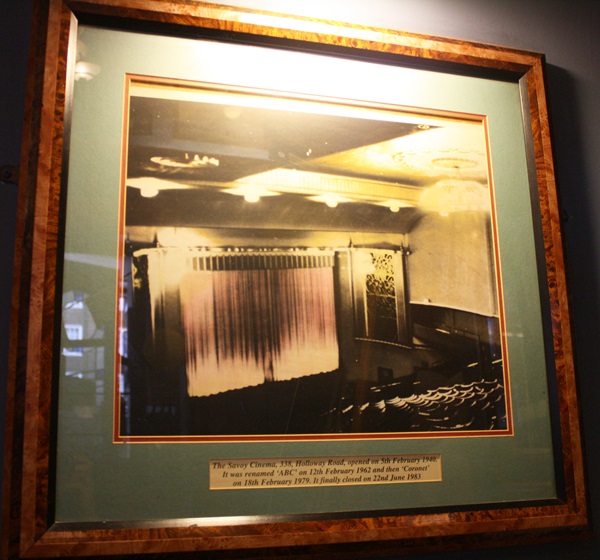
The text reads: The Savoy Cinema, 338, Holloway Road, opened on 5th February 1940. It was renamed ‘ABC’ on 12th February 1962 and then ‘Coronet’ on 18th February 1979. It finally closed on 22nd June 1983.
Framed drawing of The Coronet.
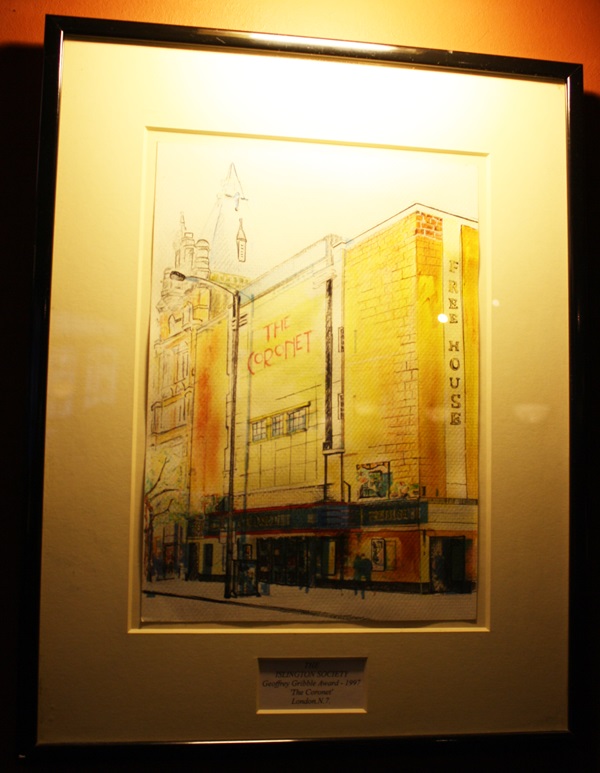
The text reads: Islington Society. Geoffrye Gribble award- 1997. ‘The Coronet’ London N7.
A piece of text about The Marlborough Theatre and The Holloway Empire.
The text reads: The Marlborough Theatre. Fredrick William Purcell opened the Marlborough at 383 Holloway Road in October 1903. The building, built by Frank Matcham, was designed as an opera house, but its mainstay soon became pantomime. Ernest Stevens took over from Purcell in 1906, and ran the Marlborough for ten years. The fare on offer was a mix of drama and comedy. The management changed hands during the 1st World war and turned into variety. Performers included Harry ‘Motoring’ Tate, and George Robey. However, when the War ended it was converted into the Marlborough Picture Theatre. The cinema closed in August 1957, and in 1962 the building was demolished. The drive is all that remains.
The Holloway Empire. The Empire was built as one of the Oswald Stoll chain. It opened in December 1899, and was the first house designed for twice nightly music hall. The Empire also had pantomime as its mainstay. When the Finsbury Park Empire opened, the competition forced it into melodrama. A series of Western plays drew crowds in the run up to the 1st World War, but by the 1920s it was a cinema. The Holloway Empire reached the end of its road as a furniture store in the 1950s.
Framed drawing of The Marlborough Theatre (Holloway Road) and a programme from The Holloway Empire.
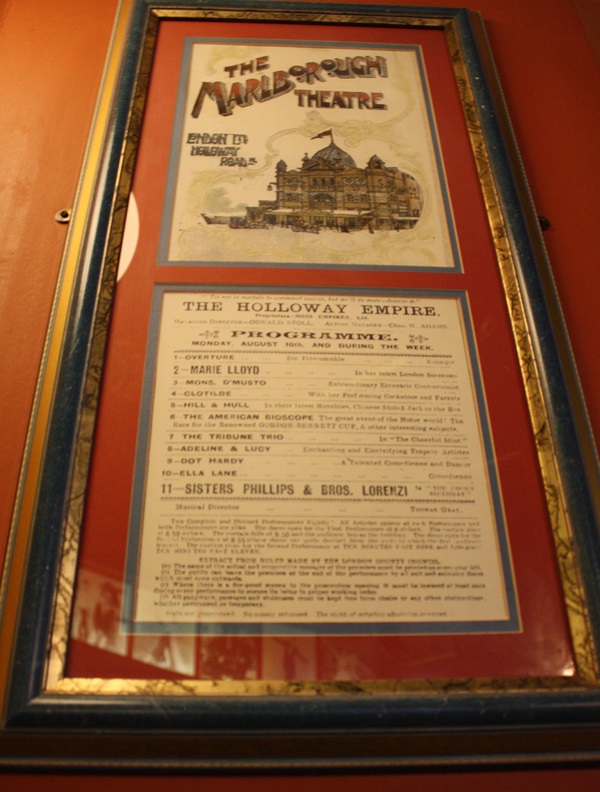
The Marlborough Theatre. Fredrick William Purcell opened the Marlborough at 383 Holloway Road in October 1903. The building, built by Frank Matcham, was designed as an opera house, but its mainstay soon became pantomime. Ernest Stevens took over from Purcell in 1906, and ran the Marlborough for ten years. The fare on offer was a mix of drama and comedy. The management changed hands during the 1st World war and turned into variety. Performers included Harry ‘Motoring’ Tate, and George Robey. However, when the War ended it was converted into the Marlborough Picture Theatre. The cinema closed in August 1957, and in 1962 the building was demolished. The drive is all that remains.
The Holloway Empire. The Empire was built as one of the Oswald Stoll chain. It opened in December 1899, and was the first house designed for twice nightly music hall. The Empire also had pantomime as its mainstay. When the Finsbury Park Empire opened, the competition forced it into melodrama. A series of Western plays drew crowds in the run up to the 1st World War, but by the 1920s it was a cinema. The Holloway Empire reached the end of its road as a furniture store in the 1950s.
A framed film poster and text about Fred Astaire.
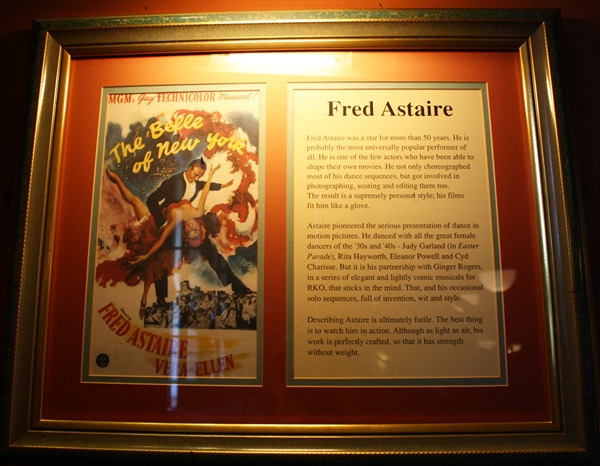
The text reads: Fred Astaire was a star more than 50 years. He is probably the most universally popular performer of all. He was one of the few actors who have been able to shape their own movies. He not only choreographed most of his dance sequences, but got involved in photographing, scoring and editing them too. The result is a supremely personal style; his films fit him like a glove. Astaire pioneered the serious presentation of dance in motion pictures. He danced with all the great female dancers of the 30’s and 40’s – Judy Garland (in Easter Parade), Rita Hayworth, Eleanor Powell and Cyd Charisse. But it is his partnership with Ginger Rodgers, in a series of elegant and lighting comic musicals for RKO, that sticks in the mind. That, and his occasional solo sequences, full of invention, wit and style. Describing Astaire is ultimately futile. The best thing is to watch him in action. Although light as air, his work in perfectly crafted, so that it has strength without weight.
A framed film poster for Taxi Driver.

A framed film poster for Gilda.
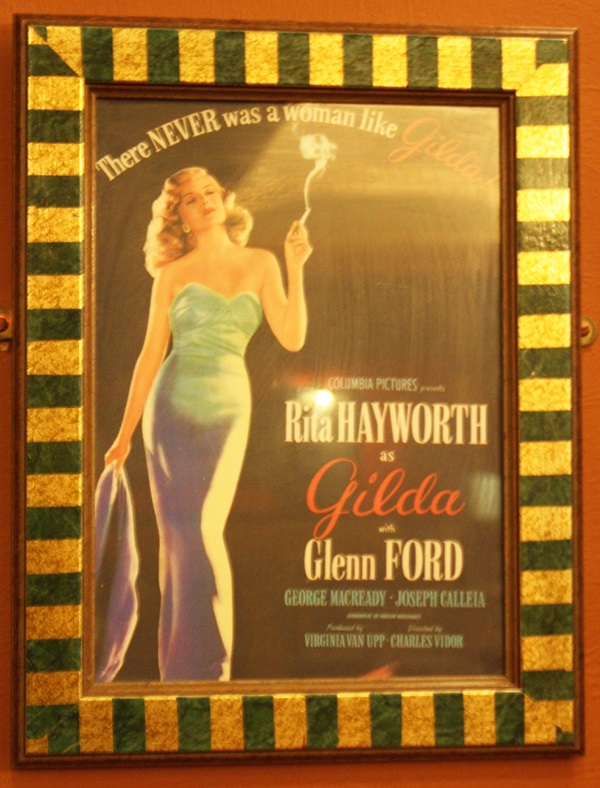
A framed film poster for Citizen Kane.
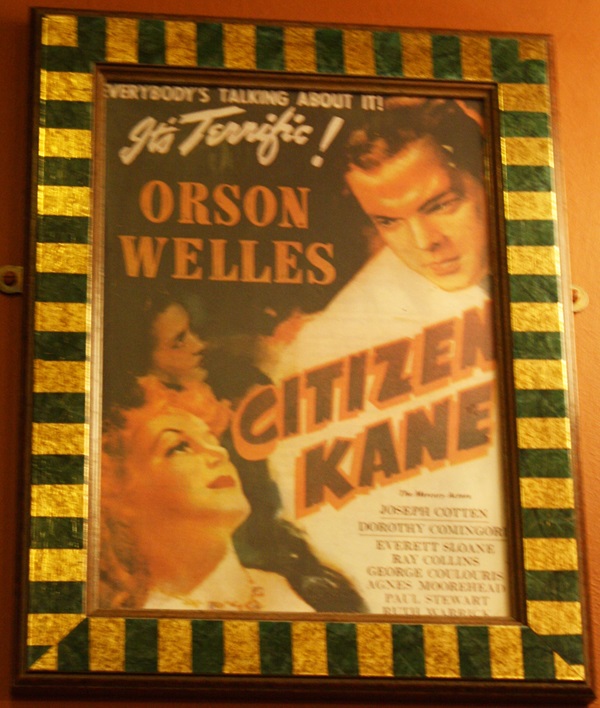
A framed Italian film poster for Doctor Jekyll and Mr Hyde.
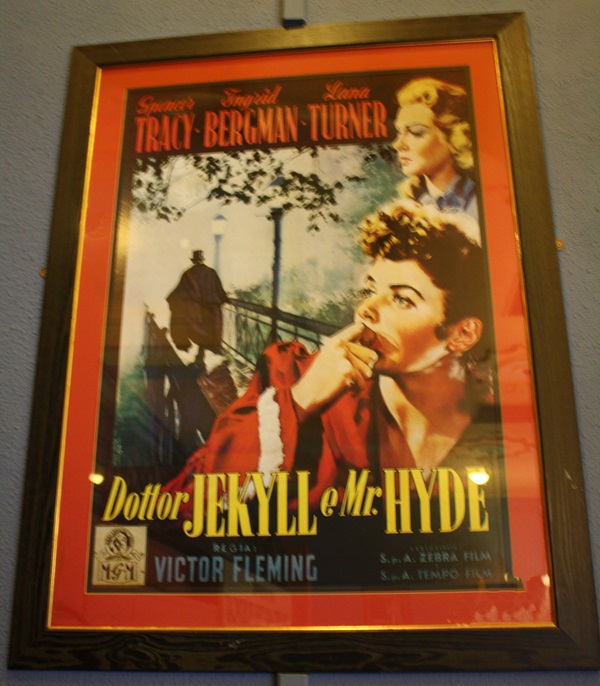
Framed film posters and stills from films starring Gene Kelly.
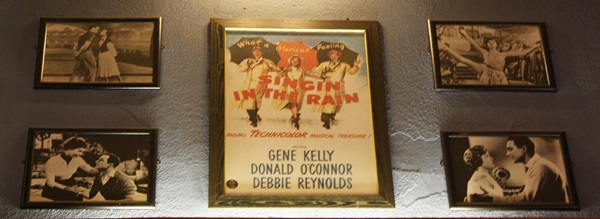
Framed film posters and stills from films starring Fred Astaire.
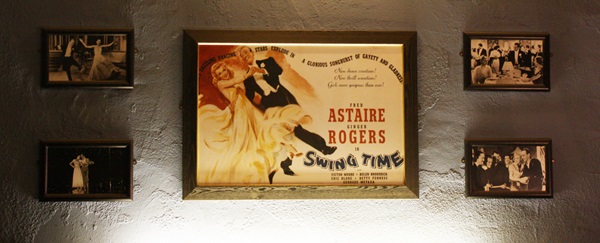
A framed drawing by Edward Lear - The Temple of Bassae.
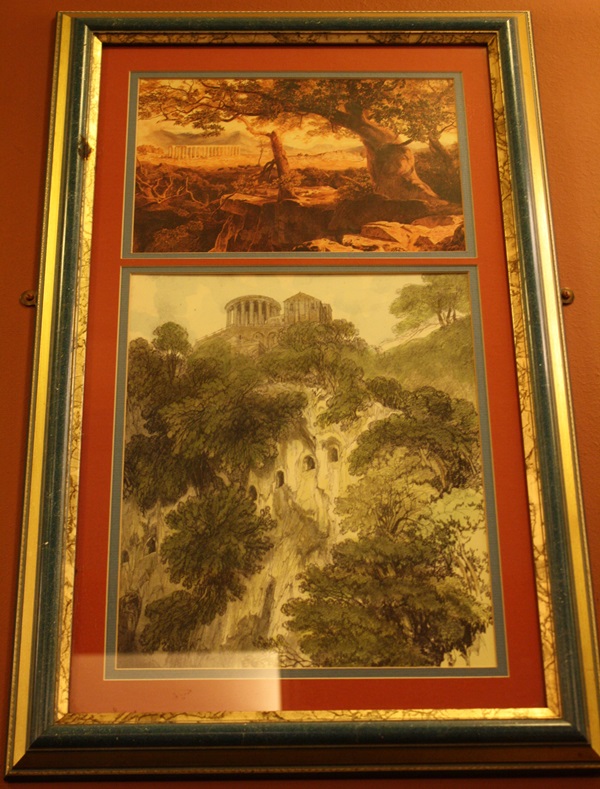
By the time he was 25 Lear had abandoned the depiction of animal landscape painting, and set off on his travels. Ten years based in Rome (1837- 1847) painting pictures for his patrons intervened before he settled in England again. He then worked closely with Holman Hunt, but declining health forced him to spend the winter abroad. His absences helped to undermine his reputation and eventually he was dependant on his old friends and patrons. In 1877 Lear wrote: “One of the most curious points in my artistic career is the steadiness with which my friends have relied on my doing them good work, contrasted with the steadiness with which all besides my friends have utterly ignored my power of doing so”. In 1871 Lear settled in San Remo, and was based there until his death in 1888. It was in San Remo that he made his illustrations to Tennyson’s poems/ the project occupied most of his time during these last years. He struggled on, despite failing eyesight, to compile two hundred completed drawings. The only entire set of these illustrations is kept at the Houghton Library.
A sculpture of a retro camera - inspired by the building’s previous use.
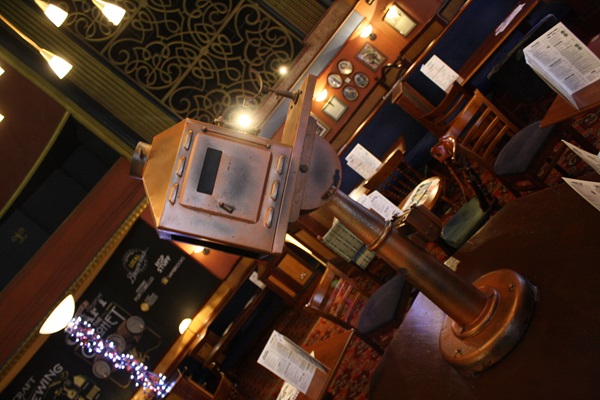
A cinema sign advertising “The Owl and the Pussycat”. It's not an original, but makes reference the building’s previous use.
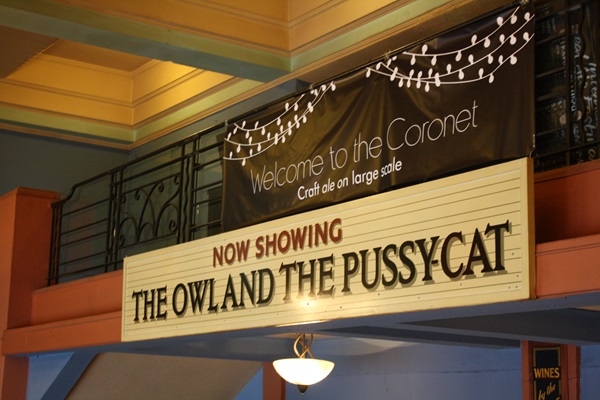
An Art Deco-inspired light-fitting.
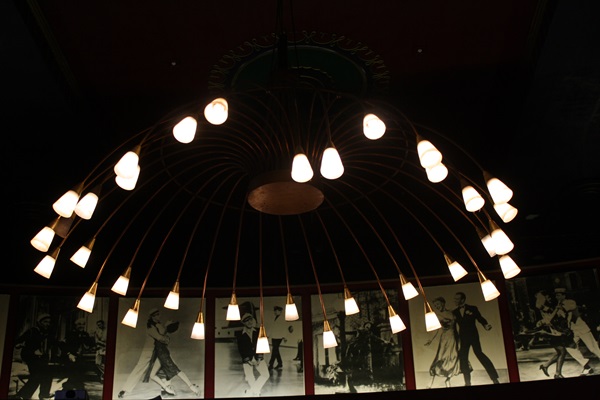
A large piece of art which goes around the old balcony to look like a film reel
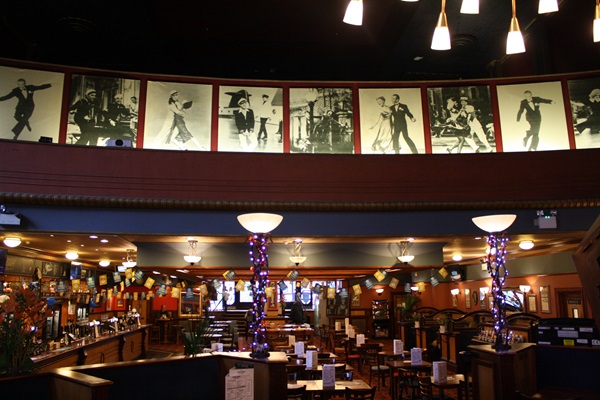
External photo of the building – front.
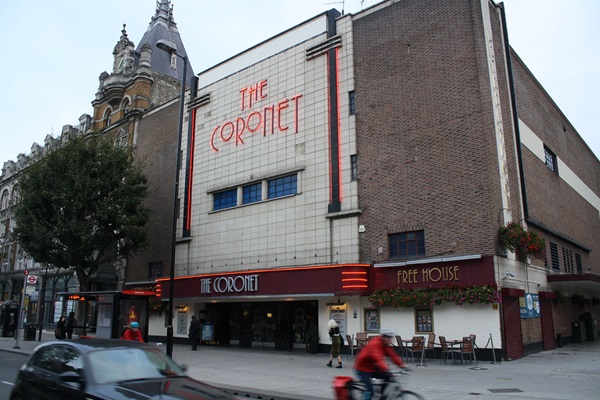
External photo of the building – main entrance.
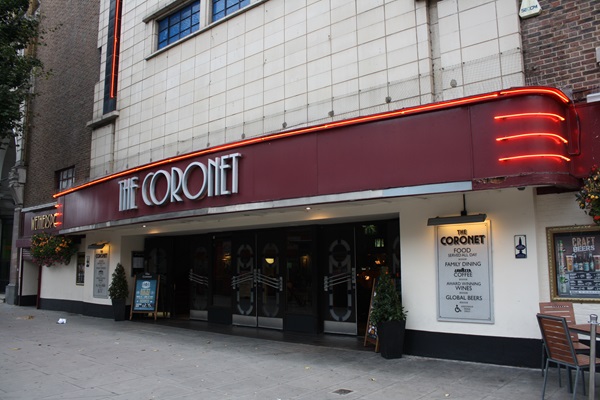
External photo of the building – the company name.
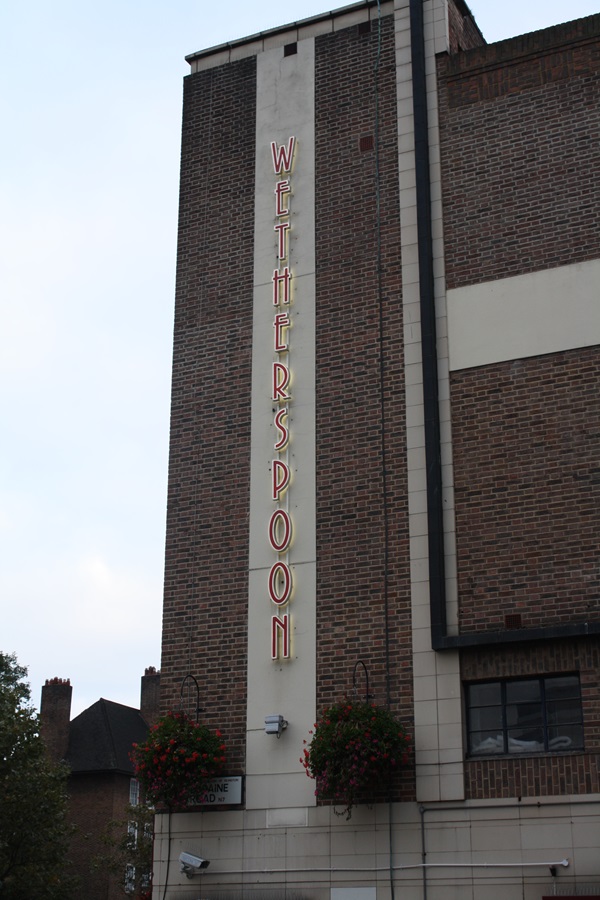
Check out Neil Sean's short film all about the history of The Coronet.
Extract from Wetherspoon News Summer 2019.
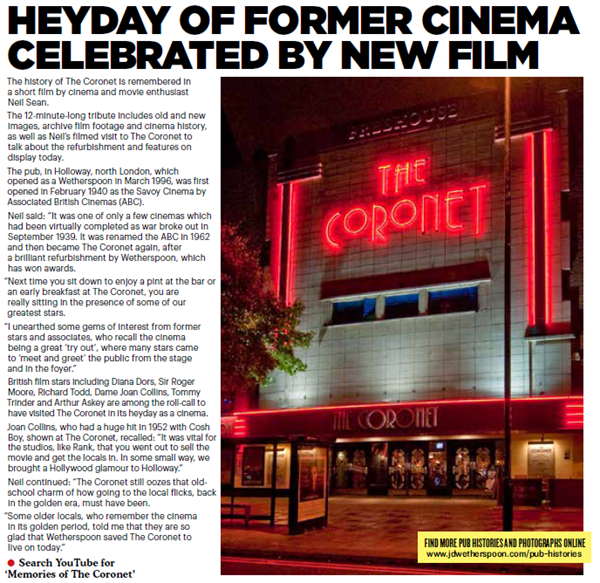
If you have information on the history of this pub, then we’d like you to share it with us. Please e-mail all information to: pubhistories@jdwetherspoon.co.uk